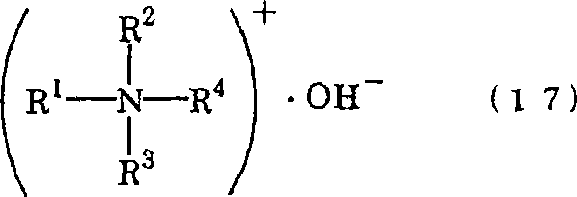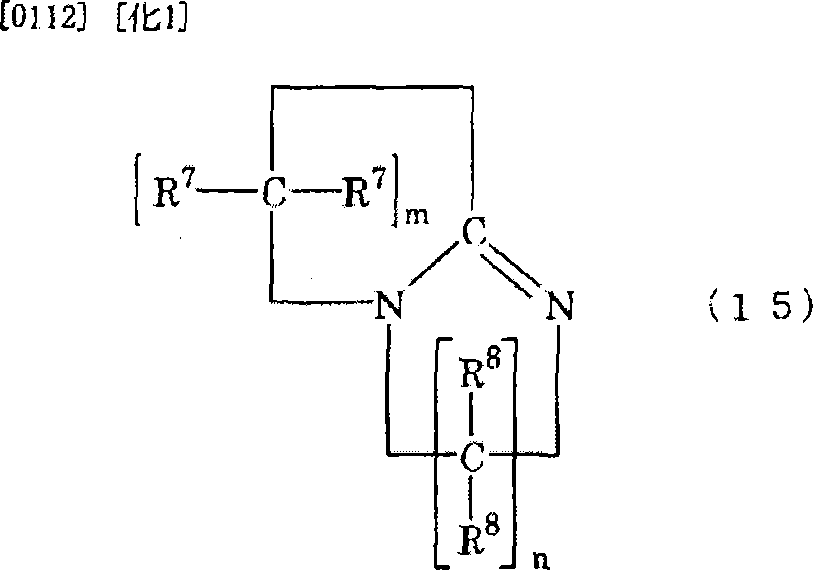Surfactant
A surfactant and detergent technology, applied in the field of surfactants, can solve problems such as foaming, insufficient reduction of particle surface ξ potential, substrate surface latent damage, etc.
- Summary
- Abstract
- Description
- Claims
- Application Information
AI Technical Summary
Problems solved by technology
Method used
Image
Examples
Embodiment 1~2
[0342] A vertical chromatographic tube with a diameter of 3 cm and a length of 50 cm was filled with cation exchange resin "Amberlite IR-120B" (Organo Co., Ltd.), and 150 parts of sodium naphthalenesulfonate formaldehyde condensate was slowly added at 25°C from the top of the column. Salt "Bemol NL" (manufactured by Kao Corporation) was adjusted to an aqueous solution having a solid content of 10%. The eluate that has passed through the ion exchange resin is passed over the column again. This operation was repeated until the sodium content of the eluent using ICP (ICPS-8000 manufactured by Shimadzu Corporation) was less than 1 ppm to obtain 100 parts of a 9% aqueous solution of naphthalenesulfonic acid formaldehyde condensate.
[0343] Then, the 9% aqueous solution of 100 parts of naphthalenesulfonic acid formaldehyde condensate obtained is packed in the reaction vessel with stirring device that can be controlled in temperature, and the temperature is adjusted to 25 ℃, while s...
Embodiment 3
[0345] Operate in the same manner as in Example 1 to obtain a 9% aqueous solution of naphthalenesulfonic acid formaldehyde condensate, and 100 parts of naphthalenesulfonic acid formaldehyde condensate 9% aqueous solution is packed in a reaction vessel with a stirring device that can be controlled in temperature, and 3.7 parts of Guanidine carbonate (produced by Wako Pure Pharmaceutical Co., Ltd.), overheated and stirred for 10 minutes at 50° C., obtained 103 parts of surfactants of the present invention (at 25° C. pH = 6.4). In addition, the weight average molecular weight of (S2) was 5000.
Embodiment 4
[0347] Using polystyrenesulfonic acid sodium salt "POLITY PS-1900" (manufactured by Lion Corporation) instead of naphthalenesulfonic acid formaldehyde condensate sodium salt, it was carried out in the same manner as in Example 1 to obtain 100 parts of a 9% aqueous solution of polystyrenesulfonic acid. Put 100 parts of 9% aqueous solution of polystyrene sulfonic acid in a temperature-controlled reaction vessel with a stirring device, add 7.4 parts of DBU, and stir for 10 minutes at 25°C to obtain 107 parts of polystyrene sulfonic acid DBU Surfactant according to the invention consisting of a 15% aqueous solution of salt (S3) (pH=6.5 at 25°C). In addition, the weight average molecular weight of (S3) was 14000.
PUM
| Property | Measurement | Unit |
|---|---|---|
| particle diameter | aaaaa | aaaaa |
| water contact angle | aaaaa | aaaaa |
| degree of esterification | aaaaa | aaaaa |
Abstract
Description
Claims
Application Information
 Login to View More
Login to View More - R&D
- Intellectual Property
- Life Sciences
- Materials
- Tech Scout
- Unparalleled Data Quality
- Higher Quality Content
- 60% Fewer Hallucinations
Browse by: Latest US Patents, China's latest patents, Technical Efficacy Thesaurus, Application Domain, Technology Topic, Popular Technical Reports.
© 2025 PatSnap. All rights reserved.Legal|Privacy policy|Modern Slavery Act Transparency Statement|Sitemap|About US| Contact US: help@patsnap.com



